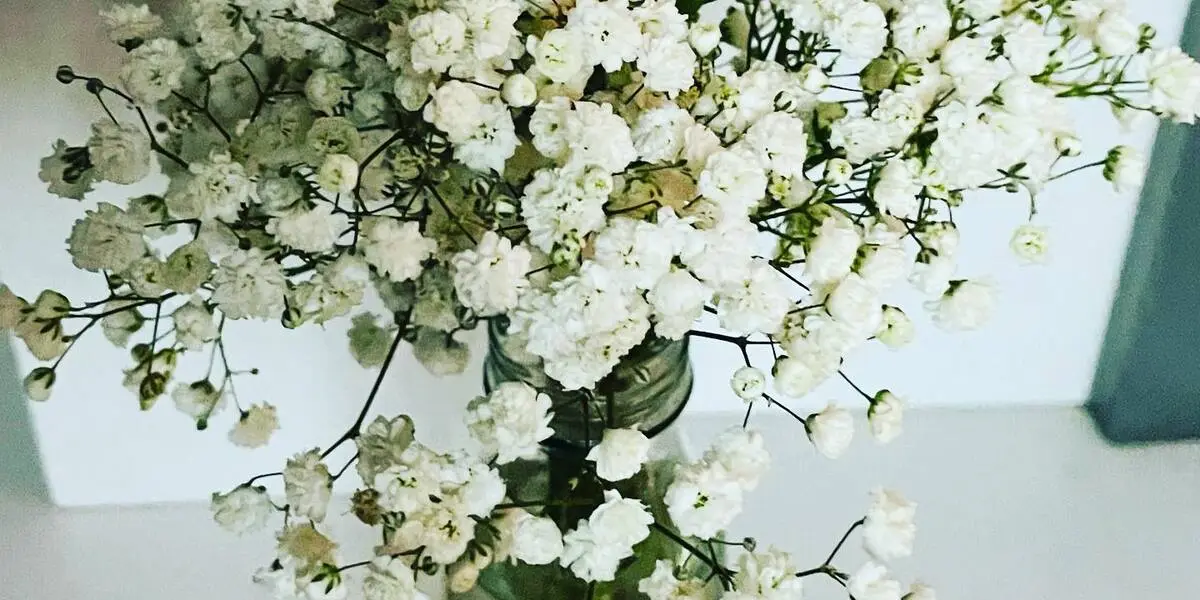Baby’s breath, scientifically known as Gypsophila, is a charming, delicate flower that has captured the hearts of many flower enthusiasts and designers around the world. With its soft, airy appearance and pure white blossoms, Baby Breath has become synonymous with purity, innocence, and beauty. Whether as a decorative addition to floral arrangements, a standalone plant in the garden, or a wedding centerpiece, Baby’s Breath holds a special place in both nature and human culture.
What is Baby’s Breath?
Baby’s Breath refers to a group of flowering plants within the Gypsophila genus, belonging to the family Caryophyllaceae. There are over 100 species of Gypsophila, but the most commonly known variety is Gypsophila paniculata, or the common Baby’s Breath.
While the most common form is the white variety, there are also pink and lavender hues available, providing some variety for floral arrangements.
Symbolism and Meaning of Baby’s Breath
Like many flowers, Baby’s Breath holds symbolic significance in various cultures. Its gentle, delicate appearance often represents purity, innocence, and everlasting love. The flower’s name itself reflects this symbolism.
It also represents the idea of support, as Baby’s Breath often acts as a filler flower, complementing other blooms and allowing them to shine. This is a beautiful metaphor for how love and relationships often thrive through mutual support and subtle care.
Baby’s Breath in Floral Arrangements
One of the primary uses of Baby’s Breath is as a filler flower in bouquets and floral arrangements. Its dainty appearance and soft texture make it an ideal complement to larger, more vibrant flowers.
Beyond weddings and funerals, Baby’s Breath is also a popular addition to bouquets for birthdays, anniversaries, or other celebratory occasions. Its subtle beauty allows it to blend seamlessly with a variety of floral themes and color palettes, making it a versatile choice for any type of event.
Baby’s Breath in Gardening
While Baby’s Breath is well-known for its use in floral arrangements, it is also a beautiful and hardy plant to grow in your garden. It thrives in well-drained soil and prefers a sunny location, making it ideal for flower beds, borders, or containers. Baby’s Breath is relatively low-maintenance and requires only occasional watering once established. It can tolerate drought conditions and is resistant to most pests, making it an excellent choice for beginner gardeners.
In the garden, Baby’s Breath provides a light and airy aesthetic that contrasts beautifully with denser or darker flowers. Baby’s Breath also attracts pollinators, such as bees and butterflies, helping to support the health of the local ecosystem.
Care and Maintenance of Baby’s Breath
Caring for Baby’s Breath is relatively straightforward, whether you’re growing it in a garden or keeping it as a cut flower. Here’s how to care for it in different contexts:
1. In the Garden:
- Soil and Sunlight: Baby’s Breath thrives in well-drained, sandy or loamy soil with plenty of sunlight. It requires at least 6 hours of direct sunlight daily.
- Watering: Once established, Baby’s Breath is drought-tolerant and doesn’t require frequent watering. Overwatering can lead to root rot, so it’s important to let the soil dry out between waterings.
- Pruning: To encourage bushier growth and longer-lasting flowers, prune the plant regularly. Cutting back the stems after the plant blooms will help it maintain a neat appearance and promote new growth.
- Fertilization: While Baby’s Breath is not particularly demanding in terms of fertilization, applying a balanced fertilizer once or twice a year can encourage stronger growth and larger blooms.
2. As a Cut Flower:
- Water and Re-cutting Stems: When using Baby’s Breath in floral arrangements, make sure to recut the stems at an angle before placing them in water. This allows them to absorb more water and stay fresh for longer.
- Freshness: Baby’s Breath tends to last for around 5-7 days in a vase, especially if kept in a cool, clean environment. Be sure to replace the water daily to extend its lifespan.
- To dry Baby’s Breath, hang the stems upside down in a dark, dry area for a few weeks.
Baby’s Breath in Weddings

Baby’s Breath has become a go-to flower for weddings due to its light, airy texture and timeless beauty. The simplicity of Baby’s Breath can bring elegance and sophistication to any wedding theme, whether rustic, bohemian, vintage, or even modern.
Its ability to pair well with other flowers makes it a versatile choice for wedding florals. It complements a variety of color schemes, whether used with white and blush roses for a classic, romantic vibe or combined with sunflowers for a more vibrant, country-style wedding. The symbolism of Baby’s Breath also makes it a perfect flower for expressing love, purity, and commitment, which are central themes in any wedding ceremony.
Conclusion
Baby Breath is more than just a simple flower; it is a symbol of beauty, purity, and everlasting love. Whether it’s used in a wedding bouquet, added to a garden, or displayed as part of a floral arrangement, Baby’s Breath has a way of capturing the heart with its delicate, airy appearance. Its enduring popularity in the world of flowers can be attributed to its versatility, charm, and the emotions it evokes. With proper care, this delicate flower can brighten up any space, bringing a sense of peace and natural beauty wherever it is placed.




